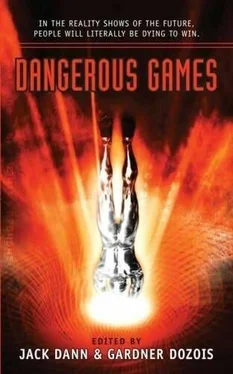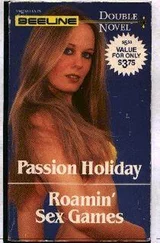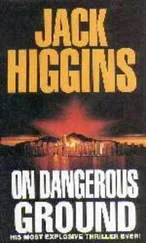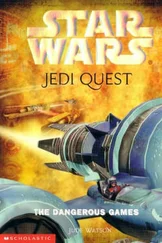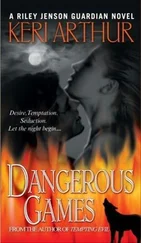Jack Dann - Dangerous Games
Здесь есть возможность читать онлайн «Jack Dann - Dangerous Games» весь текст электронной книги совершенно бесплатно (целиком полную версию без сокращений). В некоторых случаях можно слушать аудио, скачать через торрент в формате fb2 и присутствует краткое содержание. Жанр: Триллер, на английском языке. Описание произведения, (предисловие) а так же отзывы посетителей доступны на портале библиотеки ЛибКат.
- Название:Dangerous Games
- Автор:
- Жанр:
- Год:неизвестен
- ISBN:нет данных
- Рейтинг книги:3 / 5. Голосов: 1
-
Избранное:Добавить в избранное
- Отзывы:
-
Ваша оценка:
- 60
- 1
- 2
- 3
- 4
- 5
Dangerous Games: краткое содержание, описание и аннотация
Предлагаем к чтению аннотацию, описание, краткое содержание или предисловие (зависит от того, что написал сам автор книги «Dangerous Games»). Если вы не нашли необходимую информацию о книге — напишите в комментариях, мы постараемся отыскать её.
Extreme sports. Extreme future. Extreme collection.
Science fiction's most expert dreamers envision the computerized, high-risk games of the future in this winning collection. Features Robert Sheckley, Cory Doctorow, Kate Wilhelm, Alastair Reynolds, Vernor Vinge, Jonathan Letham, Gwyneth Jones, William Browning Spencer, Allen Steele, Terry Dowling, and Jason Stoddard.
Dangerous Games — читать онлайн бесплатно полную книгу (весь текст) целиком
Ниже представлен текст книги, разбитый по страницам. Система сохранения места последней прочитанной страницы, позволяет с удобством читать онлайн бесплатно книгу «Dangerous Games», без необходимости каждый раз заново искать на чём Вы остановились. Поставьте закладку, и сможете в любой момент перейти на страницу, на которой закончили чтение.
Интервал:
Закладка:
I didn’t have a clue why.
And I wasn’t going to get one, either-at least not by studying the creature. One day we’d set it up in the autodoc analysis chamber as usual, and we’d locked it into the burst cycle, working in complete darkness apart from the regular pulses of light every minute and ten seconds. But we forgot to lash the animal down properly. A status light flashed on the autodoc console, signifying some routine health-monitoring function. It wasn’t bright at all, but it happened just when the creature was hypersensitized. It thrashed its limbs wildly, making a noise like a box of chopsticks.
And hurled itself from the chamber, falling to the floor.
Even though it was dark, I saw something of its shattering, as it cleaved into a million pieces. It sparkled as it died.
“Oops,” Risa said.
THE premiere soon arrived. Games took place all over the system, but the real epicenter was Tycho. The lunar crater had been domed, pressurized, and infused with a luminous mass of habitats and biomes, all dedicated to the pursuit of pleasure through game. I’d visited the place dozens of times, of course-but even then, I’d experienced only a tiny fraction of what it had to offer. Now all I wanted to do was get in and out-and if Stroboscopic was the last game I ever played there, I didn’t mind.
“Something’s bothering you, Noz,” Risa said, as we took a monorail over the Icehammer zone. “Ever since you came back from Valdez ’s funeral.”
“I spoke to Zubek.”
“Him?” She laughed. “You’ve got more talent in your dick.”
“He suggested I should consider giving this one a miss.”
“He’s just trying to rile you. Means you still scare him.” Then she leaned toward the window of our private cabin. “There. The Arena.”
It was a matt-black geodesic ball about half a kilometer wide, carbuncled by ancillary buildings. Searchlights scissored the air above it, neon letters spelling out the name of the game, running around the ball’s circumference.
Stroboscopic .
Thirty years ago the eponymous CEO of Icehammer Games had been a top-class player in his own right-until neutral feedback incinerated most of his higher motor functions. Now Icehammer’s frame was cradled within a powered exoskeleton, stenciled with luminous Chinese dragons. He greeted myself, the players, and assorted hangers-on as we assembled in an atrium adjoining the Arena. After a short preliminary speech a huge screen was unveiled behind him. He stood aside and let the presentation roll.
A drab, wrinkled planet hove into view on the screen, lightly sprinkled with craters; one ice cap poking into view.
“PSR-J2034+454A,” Icehammer said. “The decidedly unpoetic name for a planet nearly 500 light-years from here. Utterly airless and barely larger than our moon, it shouldn’t really be there at all. Less than ten million years ago its sun reached the end of its nuclear-burning life cycle and went supernova.” He clapped his hands together in emphasis; some trick of acoustics magnifying the clap concussively. “Apart from a few comets, nothing else remains. The planet moves in total darkness, even starlight attenuated by the nebula of dust that embeds the system. Even the star it once drew life from has become a corpse.”
The star rose above one limb of the planet: a searing point of light, pulsing on and off like a beacon.
“A pulsar,” Icehammer said. “A 15-kilometer ball of nuclear matter, sending out an intense beam of light as it rotates, four flashes a second; each no more than 13 hundredths of a second long. The pulsar has a wobble in its rotational axis, however, which means that the beam only crosses our line of sight once every 72 seconds, and then only for a few seconds at a time.” Then he showed us how the pulsar beam swept across the surface of the planet, dousing it in intense, flickering light for a few instants, outlining every nuance of the planet’s topography in eye-wrenching violet. Followed by utter darkness on the face of the world, for another 72 seconds.
“Now the really astonishing thing,” Icehammer said, “is that something evolved to live on the planet, although only on the one face, which it always turns to the star. A whole order of creatures, in fact, their biology tuned to exploit that regular flash of light. Now we believe that life on Earth originated in self-replicating structures in pyritic minerals, or certain kinds of clay. Eventually, this mineralogic life formed the scaffolding for the first form of carbon-based life, which-being more efficient and flexible-quickly usurped its predecessor. But perhaps that genetic takeover never happened here, stymied by the cold and the vacuum and the radiative effects of the star.” Now he showed us holoimages of the creatures themselves, rendered in the style of watercolors from a naturalist’s fieldbook, annotated in handwritten Latin. Dozens of forms-including several radically different bodyplans and modes of locomotion-but everything was hardshelled and a clear cousin to the animal we’d examined on the yacht. Some of the more obvious predators looked incredibly fearsome. “They do all their living in bursts lasting a dozen seconds, punctuated by nearly a minute of total inactivity. Evidently some selection mechanism determined that a concentrated burst of activity is more useful than long, drawn-out mobility.”
Jumping, I thought. You couldn’t jump in slow motion. Predators must have been the first creatures to evolve toward the burst strategy-and then grazers had been forced to follow suit.
“We’ve given them the collective term Strobelife -and their planet we’ve called Strobeworld , for obvious reasons.” Icehammer rubbed his palms together with a whine of actuating motors. “Which, ladies and gentlemen, brings us rather neatly to the game itself. Shall we continue?”
“Get on with it, you bastard,” I murmured. Next to me, Risa squeezed my hand and whispered something calming.
WE were escorted up a sapphire staircase into a busy room packed with consoles and viewing stands. There was no direct view of the Arena itself, but screens hanging from the ceiling showed angles in various wavebands.
The Arena was a mockup of part of the surface of Strobeworld, simulated with astonishing precision: the correct rocky terrain alleviated only by tufts of colorless vacuum-tolerant “vegetation,” gravity that was only a few percent from Strobeworld’s own, and a magnetic field that simulated in strength and vector the ambient field at the point on Strobeworld from which the animals had been snatched. The roof of the dome was studded with lamps that would blaze for less than 13 hundredths of a second, once every 72 seconds, precisely mimicking the passage of the star’s mercilessly bright beam.
The game itself-Level One, at least-would be played in rounds: single player against single player, or team against team. Each competitor would be allocated a fraction of the thousand-odd individual animals released into the Arena at the start-fifty/fifty in the absence of any handicapping. The sample would include animals from every ecological level, from grazers that fed on the flora, right up to the relatively scarce top predators, of which there were only a dozen basic variants. They had to eat, of course: light could provide their daily energy needs, but they’d still need to consume each other for growth and replication. Each competitor’s animals would be labeled with infrared markers, capable of being picked up by Arena cams. It was the competitor’s goal to ensure that their population of Strobeworld creatures outperformed the rival’s, simply by staying alive longest. Computers would assess the fitness of each population after a round and the winner would be announced.
Читать дальшеИнтервал:
Закладка:
Похожие книги на «Dangerous Games»
Представляем Вашему вниманию похожие книги на «Dangerous Games» списком для выбора. Мы отобрали схожую по названию и смыслу литературу в надежде предоставить читателям больше вариантов отыскать новые, интересные, ещё непрочитанные произведения.
Обсуждение, отзывы о книге «Dangerous Games» и просто собственные мнения читателей. Оставьте ваши комментарии, напишите, что Вы думаете о произведении, его смысле или главных героях. Укажите что конкретно понравилось, а что нет, и почему Вы так считаете.
